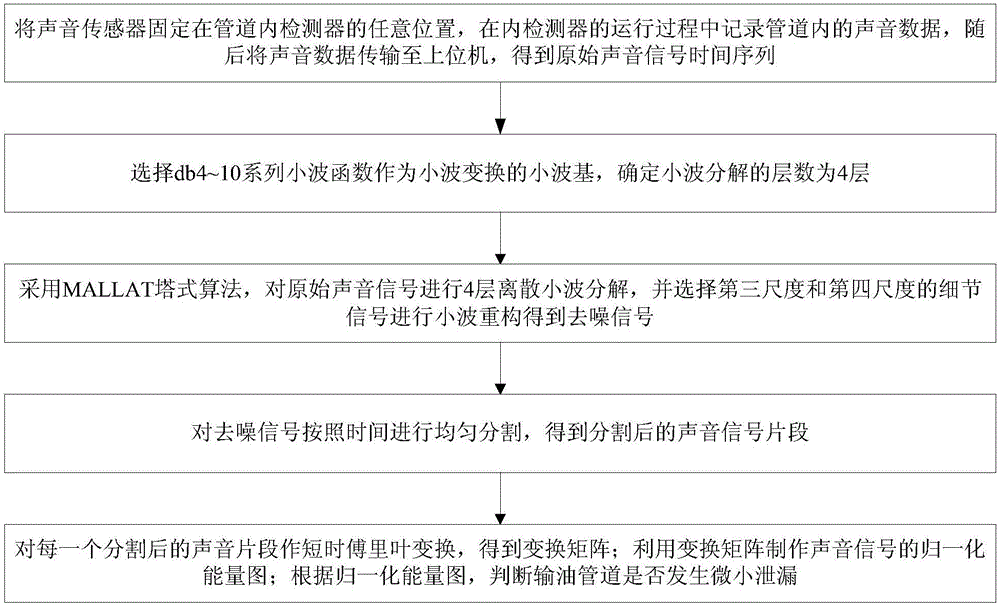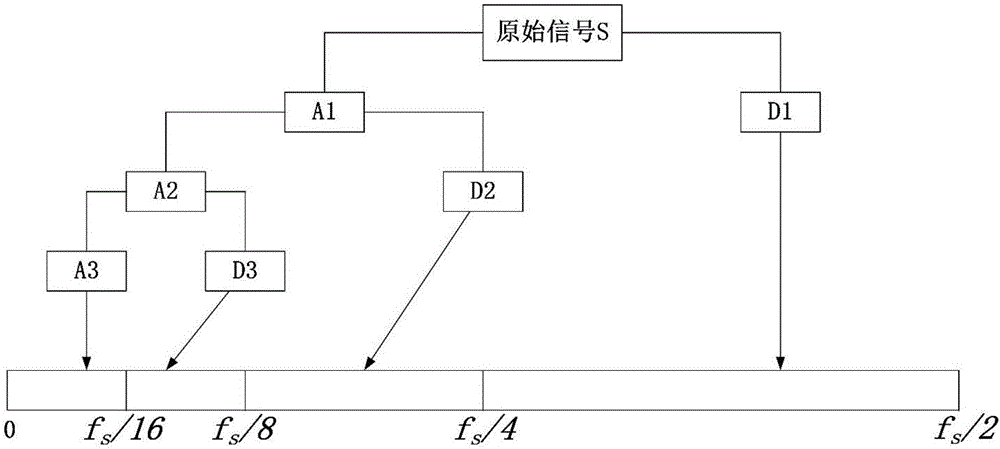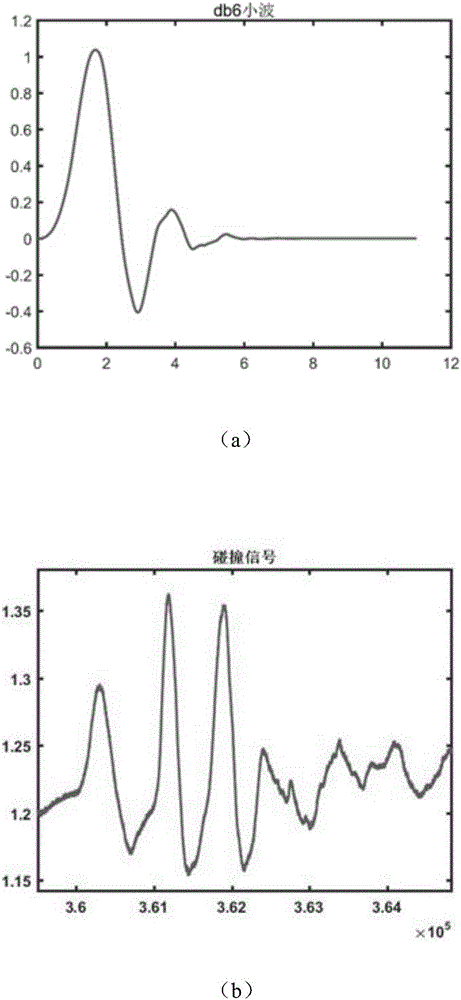Identification method for tiny leakage signal of oil transportation pipeline
An identification method and a technology for oil pipelines, which are applied in pipeline systems, gas/liquid distribution and storage, mechanical equipment, etc., can solve problems such as complex pipeline noise, and achieve the effect of improving detection sensitivity
- Summary
- Abstract
- Description
- Claims
- Application Information
AI Technical Summary
Problems solved by technology
Method used
Image
Examples
Embodiment 1
[0029] A method for identifying small leakage signals of oil pipelines, see figure 1 , the identification method includes the following steps:
[0030] 101: Select db4-10 series of wavelet functions as the wavelet base of wavelet transform, and determine the number of layers for wavelet decomposition to be 4;
[0031] 102: Using the MALLAT tower algorithm, perform 4-layer discrete wavelet decomposition on the original sound signal, and select the third-scale and fourth-scale detail signals for wavelet reconstruction to obtain a denoising signal;
[0032] 103: Evenly segment the denoising signal according to time to obtain segmented sound signal segments;
[0033] 104: Perform short-time Fourier transform on each segmented sound segment to obtain a transformation matrix; use the transformation matrix to make a normalized energy map of the sound signal; judge whether there is a small leak in the oil pipeline according to the normalized energy map.
[0034] Wherein, in step 102...
Embodiment 2
[0046] Combine below Figure 2-Figure 4 , and specific calculation formulas, examples further introduce the scheme in embodiment 1, see the following description for details:
[0047] 201: Fix the sound sensor at any position of the detector in the pipeline, record the sound data in the pipeline during the operation of the inner detector, and then transmit the sound data to the host computer to obtain the original sound signal time series S(n);
[0048] The detailed operation of this step is: fix the sound sensor at any position in the detector in the pipeline, put the inner detector into the pipeline for inspection, measure the sound data in the pipeline, take out the inner detector after the inspection is completed, and record the inner detector The sound data is downloaded to the host computer for the next step of data processing.
PUM
 Login to View More
Login to View More Abstract
Description
Claims
Application Information
 Login to View More
Login to View More - R&D
- Intellectual Property
- Life Sciences
- Materials
- Tech Scout
- Unparalleled Data Quality
- Higher Quality Content
- 60% Fewer Hallucinations
Browse by: Latest US Patents, China's latest patents, Technical Efficacy Thesaurus, Application Domain, Technology Topic, Popular Technical Reports.
© 2025 PatSnap. All rights reserved.Legal|Privacy policy|Modern Slavery Act Transparency Statement|Sitemap|About US| Contact US: help@patsnap.com



